How to write a business plan (2023)
A business plan write-up is a LOT of work, but what if you had just one guide you could use to make you feel at ease with approaching this topic?
We hear you, and we’re here to help. According to Harvard Business Review, having a write-up of your business plan sets you up for success — you’re 16% more likely to succeed as a business!
At the same time, Investopedia tells us that more than 30% of small businesses can’t make it through the first three years if they don’t have a business plan. Going into business without a plan is a bit like floating above the water, hoping someone will come to rescue you in the middle of the ocean.
Writing a business plan is like having a north star. You know what you are aiming for, both short-term and long-term. It guides your initiatives and grounds them according to your goals.
If you don’t want to be left floating in the middle of the ocean — dive into this article, where we gathered all the best research and best practices on how to write a business plan. What’s more, is that, this guide offers free design templates to help you create an effective business proposal or presentation based on your plan.
What is a business plan?
A business plan is a document that outlines your business goals, strategies, and tactics. It’s a critical tool for small business owners, as it helps you identify major challenges and opportunities, plan strategies, and introduce your business to investors and stakeholders.
Depending on the business plan format, it can serve for internal or external use. An external business plan is one you pitch to potential investors and partners. An internal plan, on the other hand, is made specifically for you and your team, as it outlines your marketing and sales strategies, and defines your company’s future planning.
You can read more about different business plan formats in the following sections of our guide. For now, let’s take a closer look at the key components of any effective business plan.
What do you include in a business plan?
If you’re wondering how to write a business plan that is effective and actionable, you have to make sure it highlights every aspect of your business. To do so, create a business plan outline that includes these key components (you can add more elements if needed):
- company’s mission statement
- description of your products or services
- description of your current and potential target market
- analysis of the industry and competition
- marketing and sales strategies
- financial forecast
- operations plan
Later on, we’ll walk you through all the key steps of creating a business plan in detail, so that you can start writing it right away. However, let’s take a closer look at the reasons why you need a business plan first.
Why create a business plan
The biggest reason for writing a business plan is that it provides a roadmap for your business. Think of it as the documentation of your north star. A business plan highlights your goals and objectives, identifies potential issues and opportunities, and establishes a decision-making framework. All in all, this document must become your plan of action to enable you to achieve your goals.
Aside from that, there are other practical reasons why you may consider writing a business plan. Take a look at some of them:
- Financing. If you’re getting a loan or searching for funds, you must have a solid business plan! Having a business proposal or plan is the only way you can let investors and lenders evaluate the viability of your business and its potential for financial success. And, hopefully, make them decide in your favor.
- Strategy. A business plan allows you to identify your target market, develop marketing and sales strategies, and finally come up with a doable plan for launching or scaling your business.
- Clarity. Building a business plan allows you to define your business concept, mission, and objectives. This helps you clarify your thinking and make sure that everyone on your team is on the same page.
- Risk management. A business plan can help you identify potential risks and challenges and develop strategies to eliminate them.
- Accountability. By creating a plan, you and your team can hold yourselves accountable for your business’s goals, timelines, and financial aspects.
The most common types of business plans
One of the best tips on how to make a business plan is to identify the type of plan in advance. This way, you can get the most out of your efforts. Basically, all business plan formats fall into two categories — internal and external.
External plans are ones you create for potential partners and investors. Usually, an external plan is presented as a business proposal or presentation that you use to showcase your brand and get funding for your business. Needless to say, such business plans have to be well-structured, visually appealing, and highlight your company’s potential. To make a professional-looking business plan presentation, use VistaCreate templates. Our layouts have all the necessary elements for your presentation — cover and last page, charts, infographics, places for photos, text, etc.
Internal business plans are only for the company’s internal use, as they focus on specific business strategies that only you and your team or partners should know about. For example, launching a new product line, expanding into a new market, or improving operations.
When building such a business plan, you need to be very specific about your finances, deadlines, and responsibilities, so that everyone involved in the process knows exactly where the company is going and what their role is in this process.
Now, let’s move on to the sub-categories of a business plan. There are different types of business plans for various purposes and scopes. Keep reading to see which one suits your needs and goals, and consider writing several business plans if needed.
#1. Startup business plan
Having a startup plan is critical to starting a new business, as planning can determine the success or failure of your venture. When writing a startup business plan, include a detailed description of the business concept, market and competitor analysis, as well as your marketing and sales strategies, financial projections, and funding requirements.
#2. Strategic business plan
A strategic business plan is a high-level plan that outlines the company’s long-term goals, strategies, and tactics for achieving them. It focuses on the bigger picture and includes the company’s vision, mission, values, and overall strategy. When writing a strategic business plan, identify your key performance indicators (KPIs) and a timeline for achieving goals.
#3. Operational business plan
This business plan format outlines your day-to-day operations, including manufacturing processes, staffing, inventory management, and customer service. One of the best ways to present this complex data visually is to use infographics. Use flow charts with icons and numbers to make infographics easy to understand. You can create an infographic design from scratch or choose from this selection of templates in the VistaCreate library.
#4. Growth or expansion plan
This business plan format is focused on expanding an existing business, including expansion into new markets or launching new products, financial projections, and funding requirements. A growth business plan can be presented to both your internal team and investors or stakeholders.
If you’re writing a growth business plan to find investors or partners, focus more on presenting a clear and compelling vision for the company’s future growth and profitability. Highlight the company’s strengths and competitive advantages, its market opportunity, and such. You can also include financial projections and KPIs to demonstrate the potential return on investment for investors or lenders.
#5. Exit plan
Creating an exit business plan is critical for business owners who are looking to sell their business, or retire and pass it down to the next generation. This business plan is focused on the steps that an owner must take to prepare their business for sale — improving financials, streamlining operations, and maximizing profitability.
How to write a business plan in 10 steps
Now that you’ve decided on the type of business plan, you can start creating it. There are many different techniques and tips for writing a business plan out there.
To help you navigate this process and understand what to include in a business plan, we distilled all the information into a step-by-step guide. Our guide works best for startup, strategic, and growth business plans, so feel free to skip some of these steps if you don’t need them for your plan. Take your pen and jot down some ideas as you follow.
#1. Start with an executive summary
For starters, sit down with your team and partners, and compile a brief summary of your business plan. It should outline the key points of your plan including your mission statement, target market, competition, financial projections, and requirements.
☝️Important: Executive summary is basically a preview of your business plan that briefly introduces your business to potential investors or partners. It must highlight the most important aspects of your business and encourage people to read further.
Your executive summary must include answers to these questions:
- What is your product?
- How is it different from other similar products on the market?
- At what stage is your business now?
- What do you want for your business in the future?
- What is your target market?
- What is your plan for reaching your clients?
- What is your current financial state?
- How do you see your revenue in the future?
- Who are your business partners?
- How much money do you need?
#2. Provide a company overview
This section of your business plan must briefly describe your company — its structure, the history of your business, management team, and such. All this information will help potential investors understand how you operate your business and decide if it’s a project they want to fund.
You can include photos of decision-makers with a brief description of their experience and skills. If you’re planning to show this page to your potential investors, you must include your team members’ salaries. If you are writing a business plan for internal purposes and planning to share it with your team, you can skip this step.
☝️Note: as a business owner, you must tell potential partners and investors about your background and explain your hiring policy. Since you are the captain of this ship, it is your personality, philosophy, and skills that determine its route. In fact, your personality can be a deal maker or deal breaker for investors!
#3. Define your target market
At this stage of business planning, you must identify your customer and their needs, and explain how your product or service meets those needs. It will give your potential investors or partners a better understanding of how you plan to succeed in the market.
If you’re writing a business plan because you’re about to expand your business into new markets, this step is absolutely a must. You have to dive deeper into the industry and market, study, and define your potential target audience and their needs. Follow or tips on how you can find and describe your target audiences.
Tips on finding your potential market
Identify your target audience. Determine the demographics, psychographics, and behaviors of the people who are most likely to benefit from your product or service. Include such factors as age, gender, income, education, location, interests, values, and attitudes.
Use social media in your research. Social media platforms such as Facebook, Instagram, and Twitter offer powerful targeting tools that can help you reach your potential market. You can use these tools to target people based on their interests, behavior, and demographics.
Conduct market research. Use both secondary and primary research methods to gather information about your target audience. The primary method focuses on collecting data directly from the source, and it includes surveys, interviews, focus groups, observation, and experimentation. Secondary research, on the other hand, involves using existing data sources to gather information — published reports, government statistics, news articles, and databases that have already been collected and analyzed by others.
Gathering this information is an ongoing process as the market keeps changing all the time. Of course, it’s a time-consuming task, yet one of the most important steps of a business plan. You can do research yourself or hire a professional marketing research team to help you with this stage of your business plan.
Once you’ve collected all the data, think about different ways to use it. First of all, you can visualize it as a pie chart or graph chart, and add it to your presentation or target audience report to show your stakeholders and investors. Secondly, you can create a portrait of your customer and share it with your team members, so that they focus on customer needs and keep clients in mind.
Here’s how you can present this information in a simple visual way:







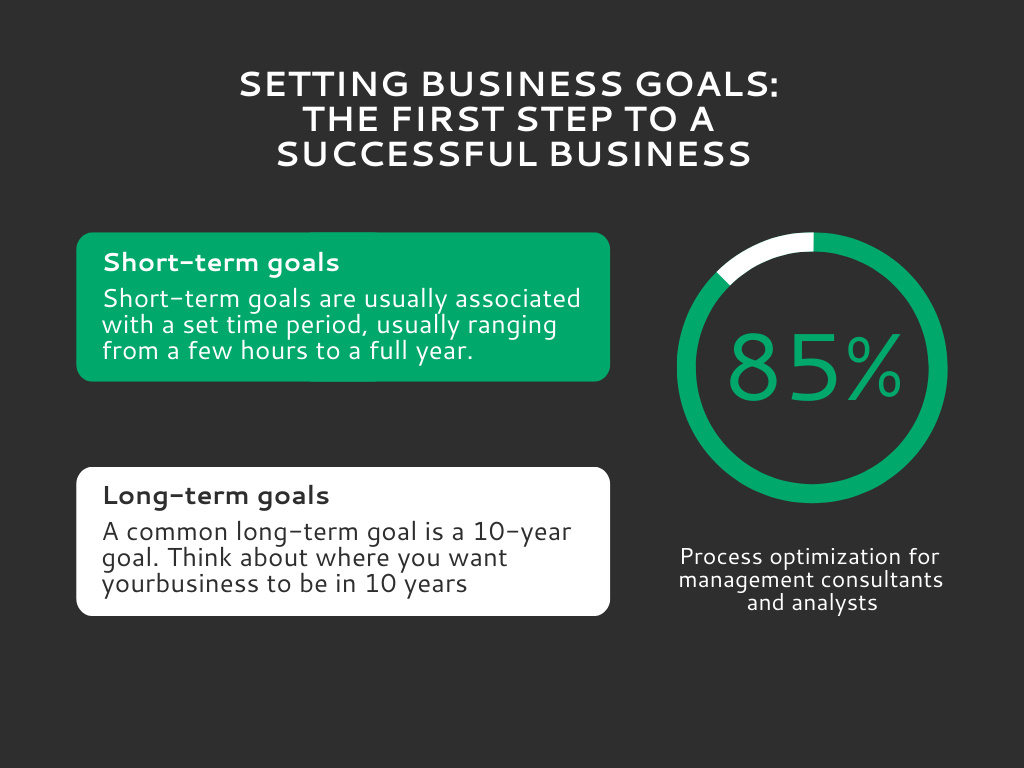
#4. Conduct a competitive analysis
One of the best tips on how to write a business plan that demonstrates your foresight and willingness to break into the market is to conduct a detailed competitive analysis. To do this, study your competitors, identify their strengths and weaknesses, and describe how your business will compete. Highlight your advantages and explain how you can improve your positions. See how you can analyze your competitors and present this data in your business plan outline.
How do you conduct a competitive analysis
Research your competitors’ products or services. Analyze their features, quality, and pricing. Also, check if there are any unique selling points that differentiate them from other players in the market. This way, you will be able to compare your own products or services to theirs and see how you can stand out.
Study their marketing strategy. Look at the channels your competitors use to promote their products or services, their messaging, and the types of customers they target. By analyzing their marketing strategy, you can identify any gaps in the market that your business can fill and find ways to improve your own marketing approach.
Learn from their social marketing strategies. Check your competitors’ socials to see how they are using them to engage with their customers and what types of content resonate with their audience. Also, look at the platforms they are using and the times of day they are posting. By analyzing all the aspects of their marketing strategies, you can see if there are topics they are not addressing or content they are missing, and build an effective social marketing strategy for your brand.
Compare your and their strengths and weaknesses. Finally, it’s important to evaluate your competitors’ strengths and weaknesses to see how you can capitalize on areas where they may be falling short. To do so, analyze their financial position, brand reputation, customer service, and overall market position. And don’t overlook their strengths, as you can learn from their successes!
Now, how can you present your competitive analysis in your business plan outline so it looks comprehensive and concise? One of the best ways to do so is to visualize your competition analysis using comparison infographics or mind maps. This way, you can compare your major competitors to each other and your brand, as well as highlight your advantages. Look at some of our comparison infographic templates and borrow some ideas for your designs.



#5. Describe your products or services
Surely, as a business owner, you know your product perfectly. However, you must explain its benefits to your potential partners and stakeholders to help them form an impression of your brand. To do so, showcase your products’ features, benefits, and pricing when writing a business plan. Also, mention the products you’re about to launch in the nearest future and explain how your brand will profit from them.
Describing the process of making your products is just as important. Are they handmade, do you use the factory’s facilities, or do your dropship them? Include photos or videos of the manufacturing process in your business plan outline.
To showcase your products or services at their best, you need to use professional, eye-catching images and videos that highlight your product range and key ingredients. Upload multiple visuals to one of our pre-designed layouts and add text descriptions.
If your business is offering certain services, you can describe them with photos that highlight customer satisfaction and add a quote from one.


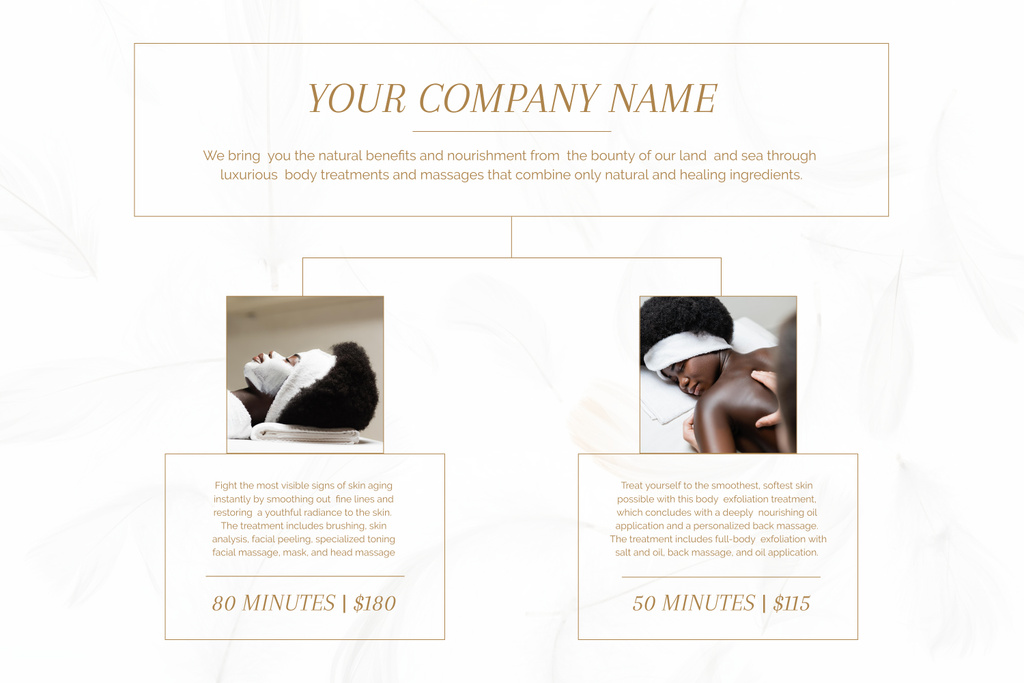

#6. Develop a marketing and sales strategy
Once you’ve described your products and services, move to the next section of your business plan outline and create sales and marketing plans. Include the advertising channels you will use to reach your target market, decide on the pricing strategy, and set your sales goals.
Based on your target audience analysis, you can identify which marketing channels to use and what is the best social media marketing strategy for your brand.
Next, create a presentation explaining every aspect of your sales and marketing strategies, and show it to your team members. This way, you can be sure that everyone in your company is on the same page and knows exactly what they should be doing to achieve the desired result.
Look at some of our presentation templates and choose which works best for your needs.

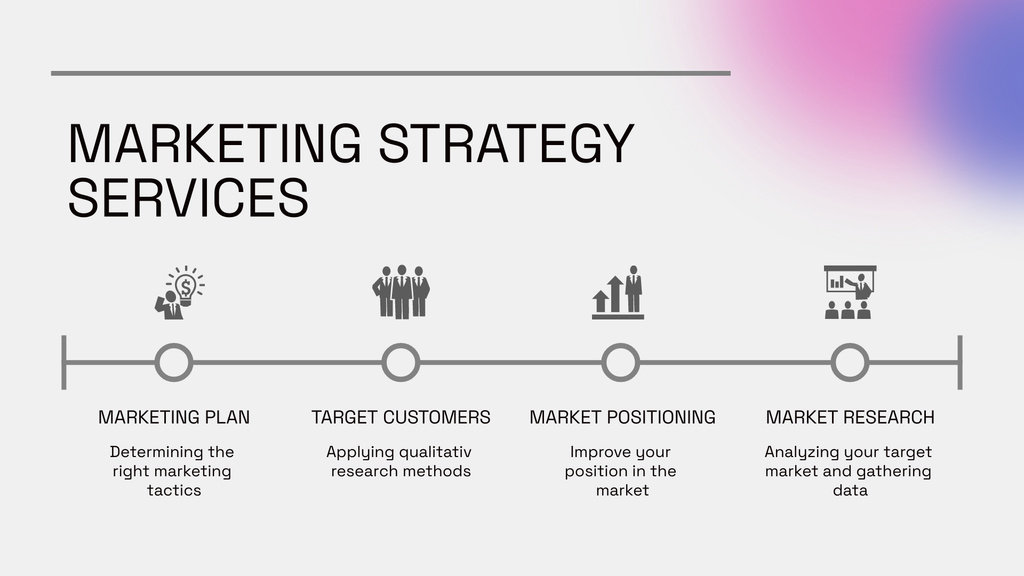
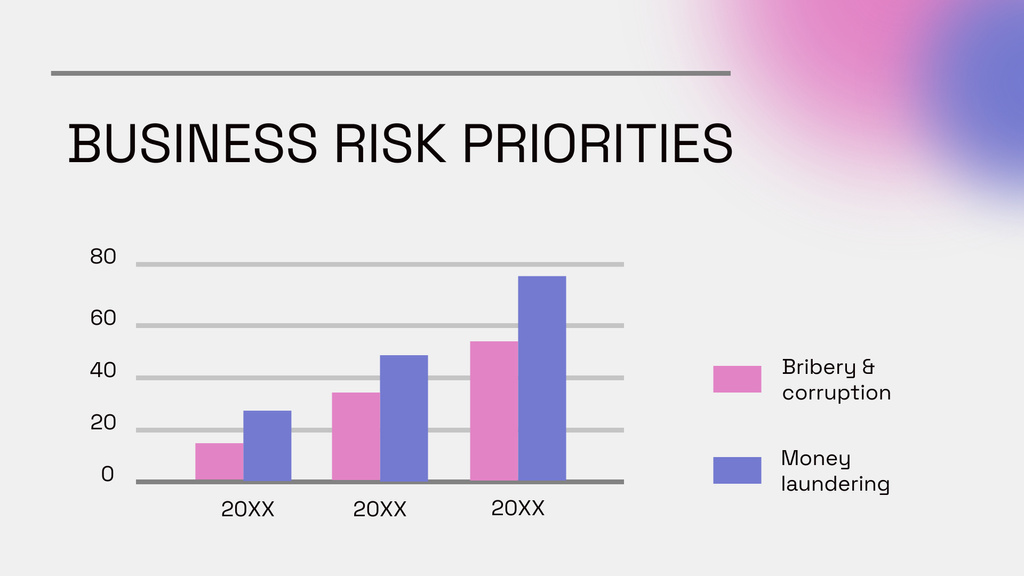



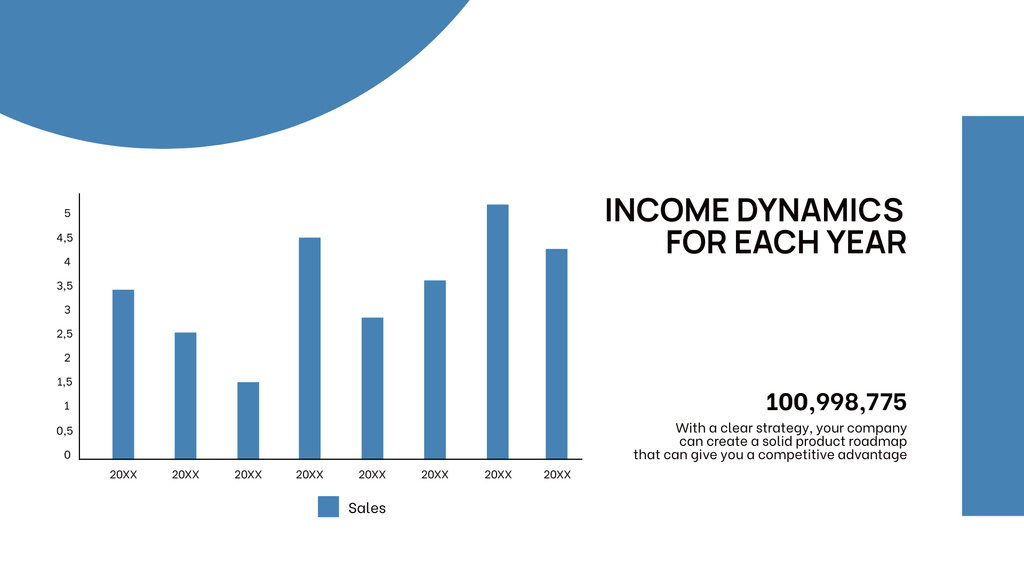





#7. Create a financial plan
When writing a business plan outline, highlight a financial aspect of your business. Include your projected income statement, balance sheet, and cash flow statement, as well as any funding requirements and repayment terms. Not only does it help you monitor your company’s finances, but it also shows potential partners and investors that you’re a reliable business owner that will track every penny they’ll invest. Having an accurate financial plan significantly increases your chance of getting funds or loans.
Income statement
The income statement, also known as the profit and loss statement, shows the revenue and expenses of the business over a certain period of time. It shows the profitability of the business by subtracting expenses from revenue to calculate net income. Here’s how you write an income statement for your business plan outline:
- List all sources of revenue for your business, such as product sales or service fees.
- List all expenses — rent, salaries, and marketing costs.
- Subtract your expenses from your revenue to calculate your net income.
Balance sheet
The balance sheet is a snapshot of the company’s financial position at a specific point in time. It includes the assets, liabilities, and equity of the business. This is how you can create a balance sheet:
- List all your business assets — cash, accounts receivable, inventory, and equipment.
- List all liabilities, such as loans, accounts payable, and taxes owed.
- Calculate the equity in your business by subtracting liabilities from assets.
Cash flow statement
This statement shows how money flows in and out of the business. It provides insight into your financial operations and investments, as well as predicts financial issues that a company may face in the future. Use these guidelines to write your own cash flow statement for a business plan outline:
- List all money inflows, such as revenue and loans.
- List all money outflows — operating expenses, equipment purchases, and loan payments.
- Calculate your net cash flow by subtracting your outflows from your inflows.
One of the best tips on how to write a business plan with solid financial statements is to be as accurate and detailed as possible. Use accounting software and consult with a professional accountant to ensure that your financial statements are accurate and comply with accounting standards. Remember to update these statements regularly to track any changes in your business’s financial position.
#8. Outline your operations plan
When creating a business plan, describe your day-to-day operations: your location, facilities, equipment, and staffing. By including this information in your plan, you can give your stakeholders and partners the big picture of how your company operates, as well as show them that your company is well-organized. You can present this information visually as an infographic with maps and pie charts.
Pick an infographic template from our library and customize it with your numbers and text.
#9. Conduct a risk analysis
No matter how well-planned your business is, you need to identify potential risks and challenges that the business may face. Put this data in your business plan outline and describe how you can eliminate or mitigate those risks. When you admit risks and offer solutions to potential issues, you show your partners and investors that you are a sensible business owner and reliable partner.
#10. Finish with a conclusion
Well, what is a business plan without a conclusion? Being the last section of your plan, it summarizes its key points and helps you end on a high note. With a concise and inspiring conclusion, your presentation can have a lasting positive impression on stakeholders and partners.
☝️Try this: in a conclusion, feature your own motivational quote and a photo. By doing so, you show that there’s a real person behind your business, someone who’s inspired and open to collaborations.
Pro tips on how to make a business plan
Writing a business plan takes a lot of effort, but we have some tips to help you create a compelling and persuasive business plan. Aside from popular tricks, we include some unconventional business plan tips on how to make your proposal stand out and gain the trust of potential investors. Apply them before your competitors start doing so!
Tailor your plan to your audience
If you’re presenting your business proposal to investors, focus on the financials and potential ROI. If you’re using it for your internal team, emphasize actionable steps and explain how you can achieve your goals together.
Define your business model
Clearly explain your business model, including revenue streams, cost structure, and customer acquisition strategy. This will demonstrate to investors and stakeholders that you have a solid plan for profitability and increase your chances of actually getting funds for your business.
Invest time in making a strong executive summary
The executive summary is the first thing people will read, so it’s important to make it strong and compelling. It should provide a concise overview of the entire business plan and highlight the most important aspects.
Tell the story behind your business
Rather than just presenting facts and figures, use the storytelling approach to create an engaging and memorable business plan. This can help to build an emotional connection with your potential investors or stakeholders, and boost the chances of your business plan being approved and funded.
Try a creative approach
Wondering how to write a business plan that stands out? Don’t be afraid to get creative! Incorporate unique elements or approaches that showcase the personality of your business and your personality as a leader. Use more quotes, put client testimonials into speech bubbles, add stickers — you name it! By adding creativity, you can make your business plan more memorable and engaging. Browse VistaCreate to find thousands of backgrounds, styles, and graphics to experiment with.
Use visual elements
Visual elements such as infographics, charts, and graphs can make your business plan outline more visually appealing and easier to understand. You can also add interactive elements such as videos, animations, or other multimedia elements. This can help with keeping your audience engaged and interested.
Incorporate your branding
Use your branding throughout the business plan to create a consistent look and feel. This will reinforce your brand identity and make your business plan more memorable. You can easily add your branding to any design after building your own brand kit in VistaCreate. Visit this page to build your own brand kit for free.
Get feedback
Before finalizing your business plan, get feedback from others, including mentors, advisors, or potential investors. This can help identify any weaknesses or areas for improvement.
Regularly review and revise your plan
Curious about how to create a business plan that always stays relevant? Review it regularly and make necessary revisions. This will help you stay on track and adapt to changes in the market or your business.
Make your plan look doable by breaking it into simple steps
Develop a realistic and actionable plan for achieving your business goals. Break down your goals into specific milestones and identify the steps needed to achieve them. One of the best ways to do so is through timeline graphics. You can easily create one using our free timeline templates.
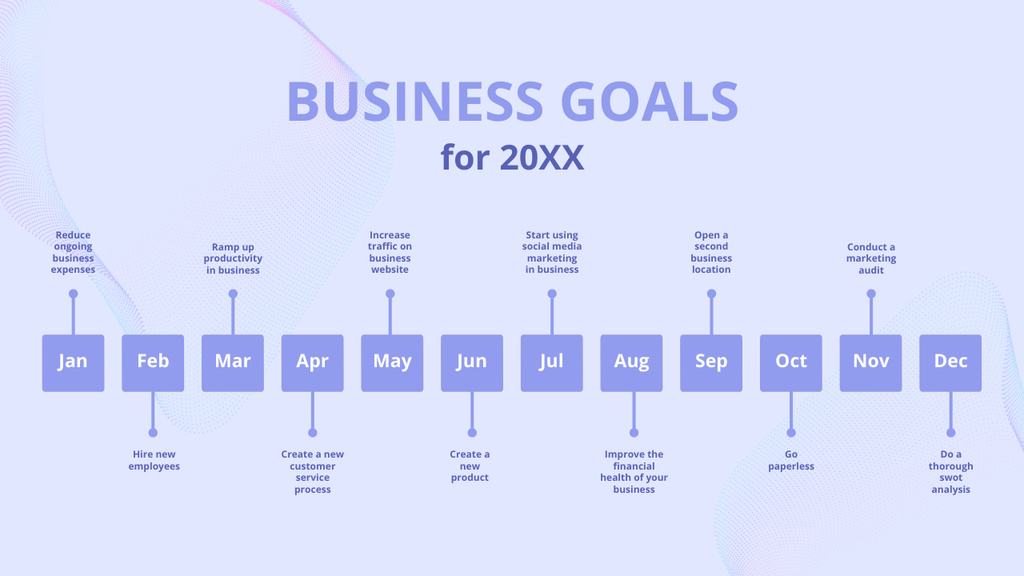
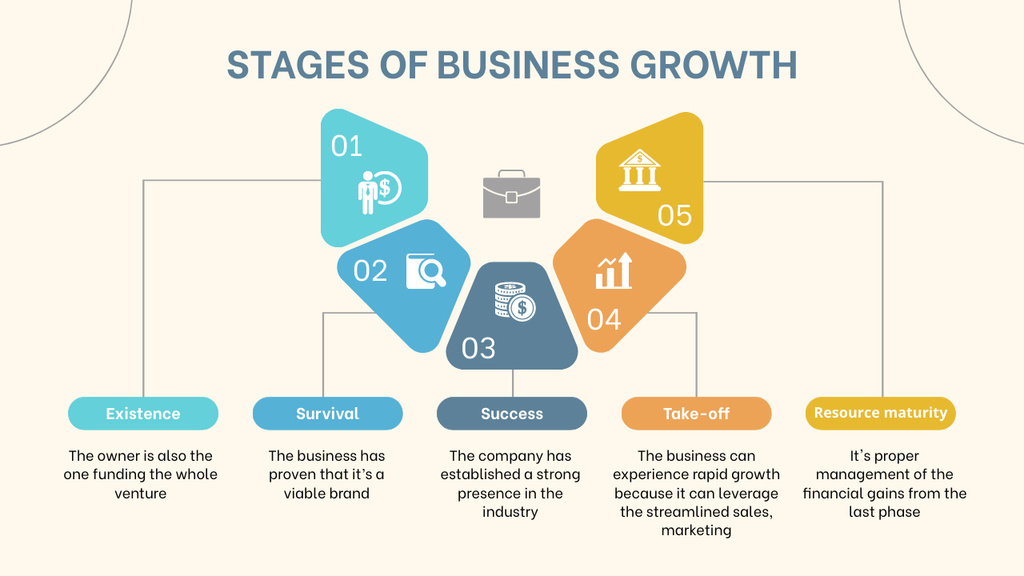
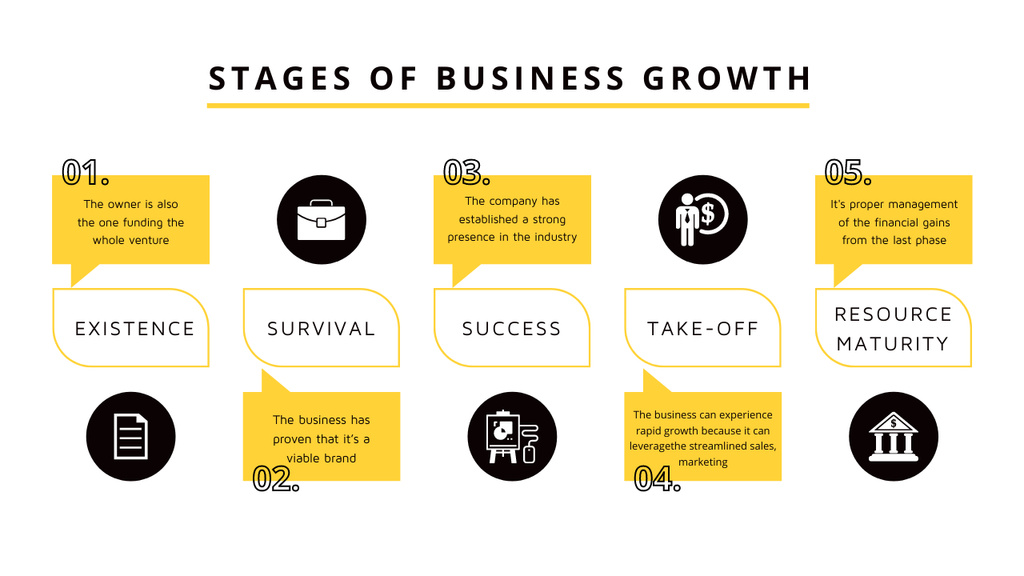

5 common mistakes to avoid when writing a business plan
When writing a business plan, people often make the same mistakes that lead to ineffective business plans and financial issues. By avoiding major mistakes, you can create an actionable business plan that sets you up for long-term success.
Here are the 5 most common business plan mistakes, plus our tips on how you can avoid them.
#1. Failing to conduct market research
One of the most common mistakes people make when creating a business plan is failing to conduct thorough market research. This can result in inaccurate financial projections and a lack of understanding of the target market, competition, and industry trends.
Solution: Invest your time in researching the market and identifying potential issues, as well as opportunities for growth. Conduct surveys, analyze data, and research competitors to understand the market you’re entering better.
#2. Ignoring competition
Ignoring or underestimating your competitors can be a costly mistake. It’s important to understand who other industry players are, what they offer, and how you can stand out with your product.
Solution: Study your competitors to see their marketing and business strategies. Compare your and their strengths and weaknesses, and determine how you can make your offer unique and how you can stand out from the crowd.
#3. Being overly optimistic
Another mistake you can make when writing a business plan is underestimating the time and resources needed to achieve your business goals. Needless to say, this can lead to unrealistic expectations and financial issues.
Solution: Be realistic with your finances and timing. When creating a business plan, include both best-case and worst-case scenarios. Use historical data or industry cases to support your projections.
#4. Lacking clarity and focus
You can’t build an effective business plan without clarity and focus — you simply won’t know what to do at different stages of your business growth. Not knowing your business planning basics can lead to delays, confusion, and the loss of your team’s trust in you.
Solution: Clearly define your business concept, mission, and objectives. Avoid being vague; focus on specific goals that are measurable and achievable.
#5. Not planning your future
Many small businesses make this mistake, as they simply can’t be sure about their future. And because they don’t have a clear vision for the next 5-10 years, they can’t see all the potential risks and opportunities for growth.
Solution: Create a long-term strategy by writing down your goals for each stage of your business, and try to forecast your potential problems. Based on this information, create a roadmap to help you achieve your long-term goals with minimum risks.
Design your business plan and make it unique
Once you’ve figured out how to make a business plan that will work for you, turn it into a presentation or business proposal. By doing so, you can present your ideas and strategies to both your team and potential investors in a professional way and gain their trust.
To do so, you need to assemble all the sections of a business plan, edit them, and then transfer them onto one of our business plan templates. Decide on how you want to present your business plan and choose a template accordingly.
One of the ways to present your business plan is to make it a presentation that includes mind maps, timelines, infographics, mood boards, and so on. Divide your presentation into sections that highlight different aspects of your planning, and add text descriptions and illustrations to each of them.
You can easily design your business plan presentation in VistaCreate. Check out our layouts, and pick one that works best for your business.

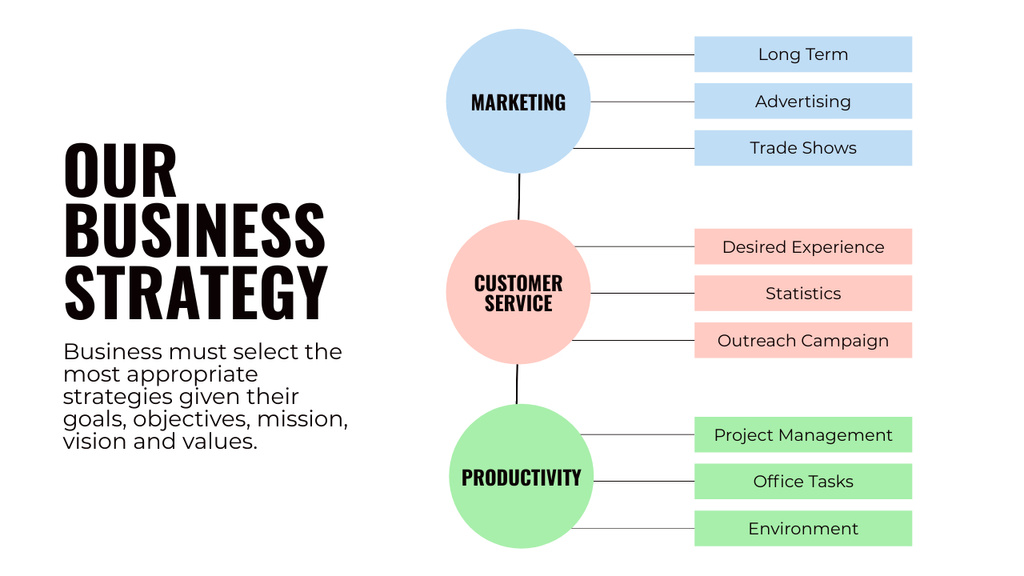
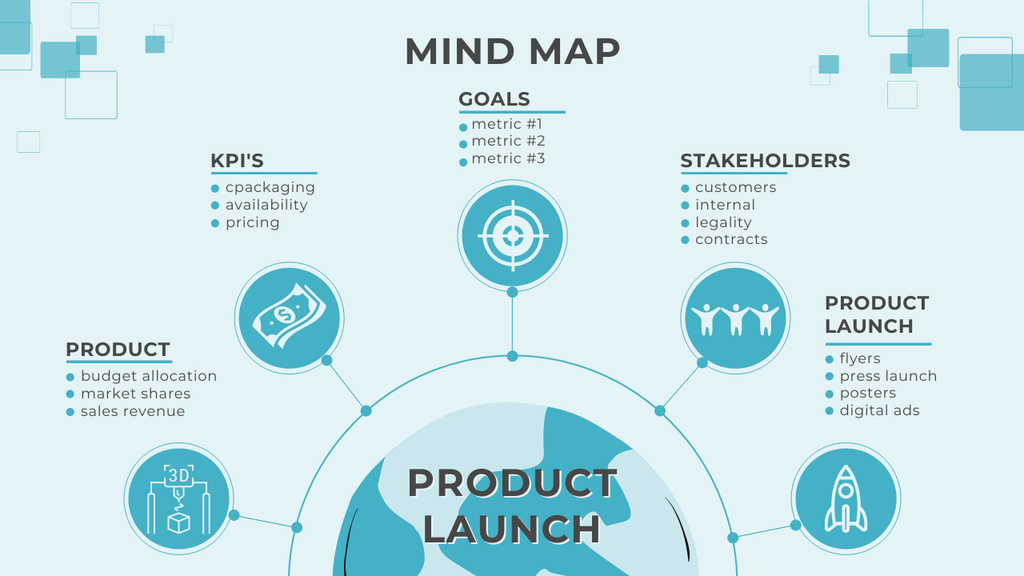
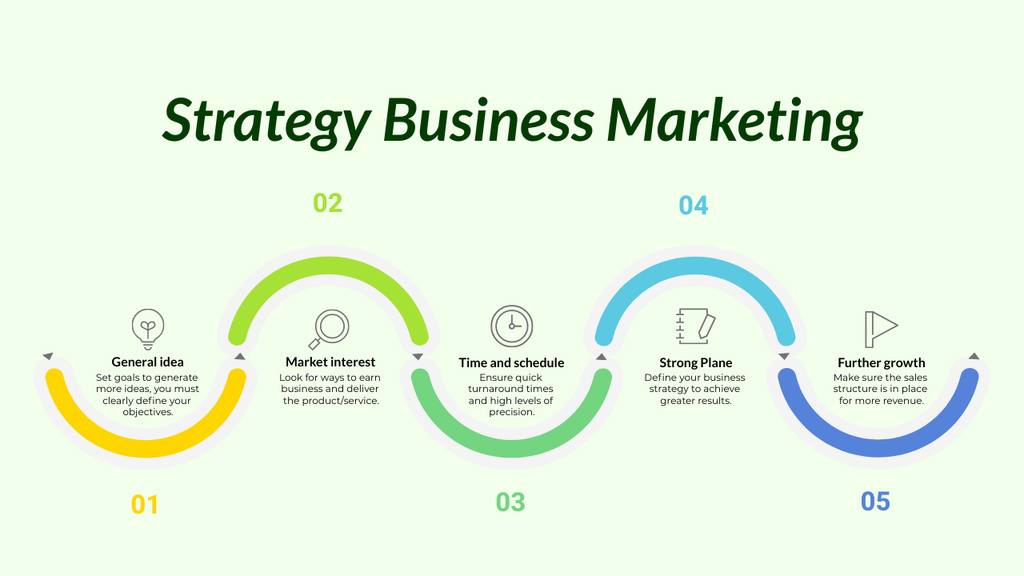
VistaCreate features plenty of ready-made presentation templates, as well as easy-to-use editing tools and features to help you with your project. A pre-designed template makes it easy to create a professional-looking presentation, as it already has a well-organized layout. All you have to do is customize it — upload your photos, videos, and fonts to the editor and edit the text as you need. Take your time to experiment with styles and backgrounds, and add decorative graphic elements from our library.
What’s more, is that you can apply your brand aesthetic to your business proposal. To do so, add your brand colors, fonts, and logos to a brand kit in VistaCreate, and apply them to your design in a click. This tool helps create consistent designs for all business purposes, including web, print, and socials. So, make sure you have a brand kit to use in your next project.



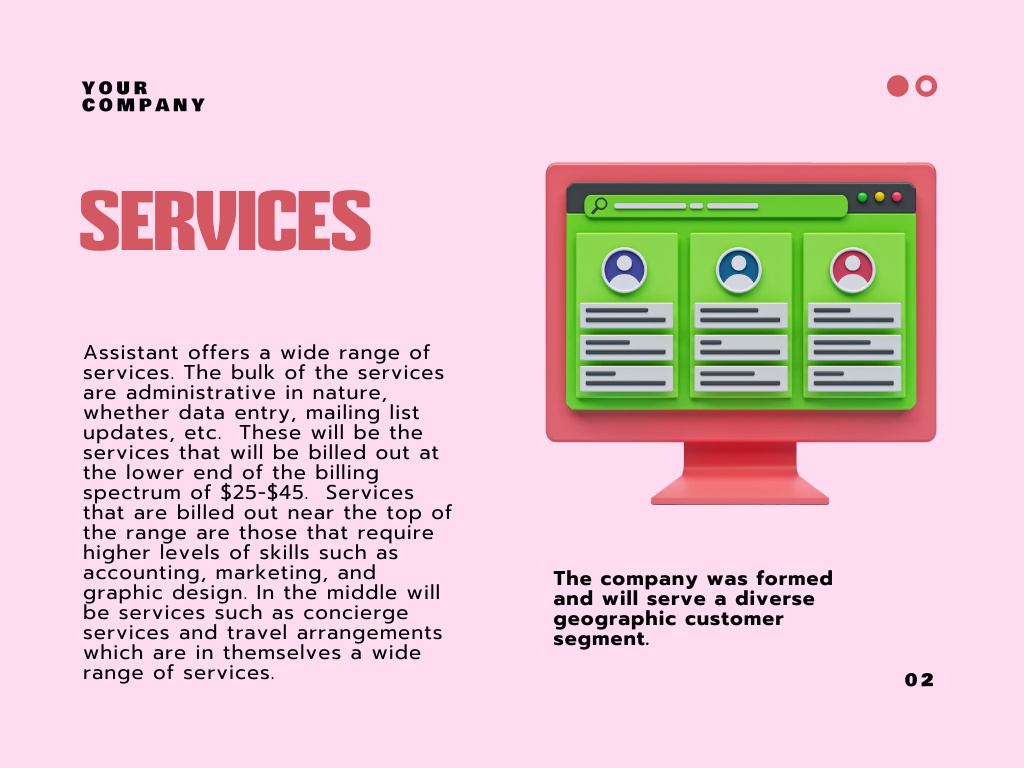




Closing thoughts on writing a business plan
Don’t let the fear of writing a business plan hold you back!
It’s not your writing skills that make your plan effective. The key to a successful business plan is the eloquence and accuracy of the information, as well as engaging design and a balance of copy and visuals.
After creating a business plan, turn it into an impressive proposal. Design a top-notch presentation using our templates; add pie charts, timelines, mood boards, and infographics to illustrate your proposal. Finish off by applying your branded colors, fonts, and logos using a brand kit in VistaCreate – it will make your proposal look professional.
Be it a presentation or a formal document, you can make your business plan look the way you’ve envisioned it with VistaCreate.




















